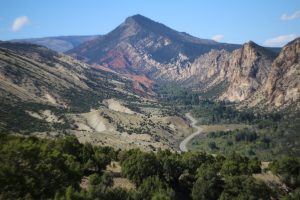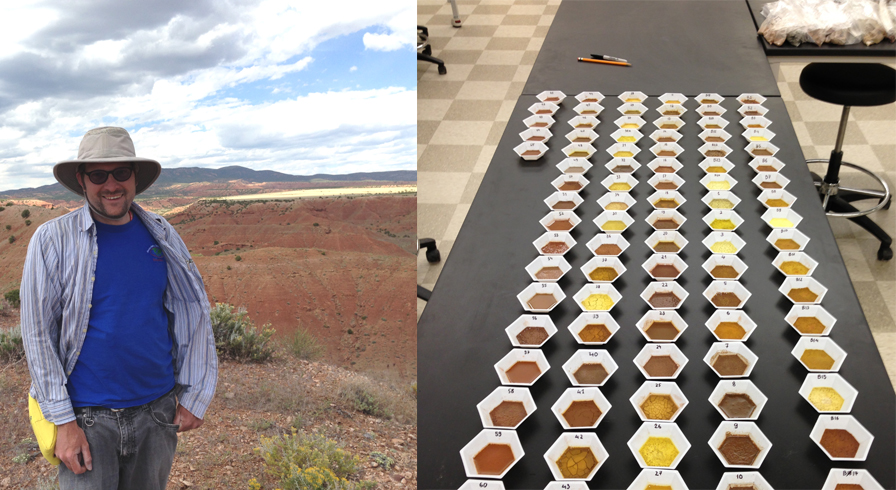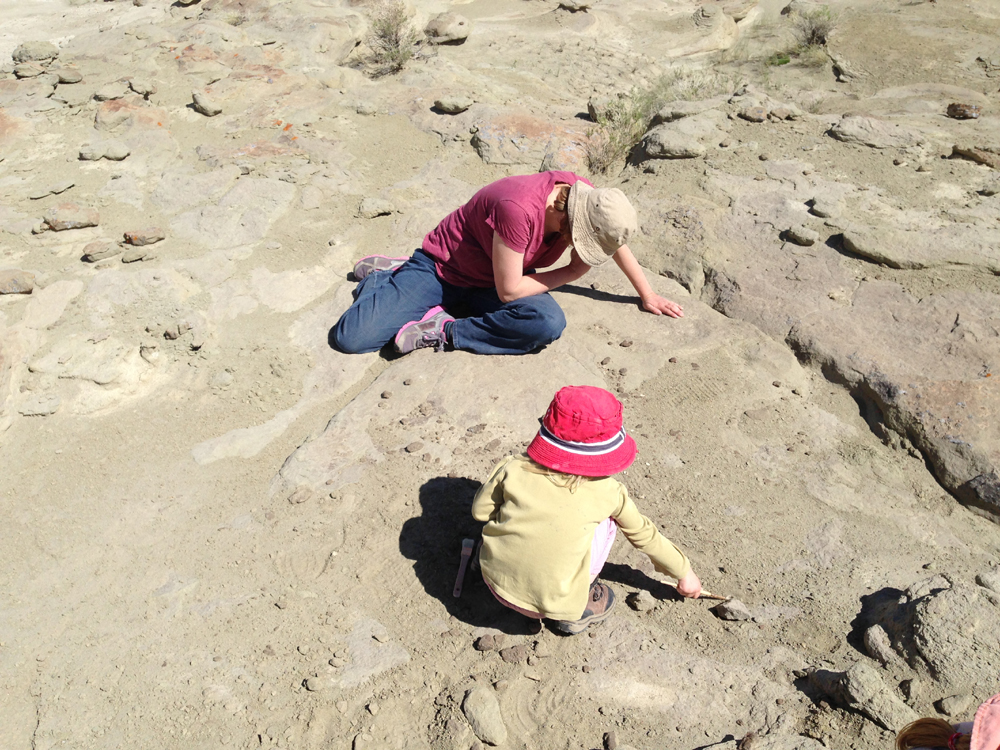These are my major active research projects:
Sheep Creek Valley, Northeastern Utah
AGES OF ROCKS: Late Permian/Early Triassic
GEOLOGICAL FORMATIONS: Park City and Dinwoody Formations
I’m currently involved in an ongoing autopsy of Earth’s worst mass extinction, when 83- 97% of the species on the planet perished in a geological instant, 252 million years ago. This event defines the Paleozoic/ Mesozoic Boundary, the first major division of the age of fossilized life, called the Phanerozoic Eon. This event happened before the age of dinosaurs, between two periods of time, called the Permian and Triassic Periods. This event is called the “Great Dying” by scientists because of the disappearance of many fossilized organisms across this horizon. Unfortunately, because this event occurred so long ago, rock layers preserving the event are very rare, found in a dozen or so places scattered across the world, and when found are often faulted and partly melted as these rocks become deeply buried and uplifted back to the surface over a long period of time. I was lucky and I stumbled upon a geological time capsule here in northern Utah, and found a well-preserved series of rock layers deposited in an ancient shallow sea during the time of this mass extinction event, and I set out to determine what nearly killed off all life on Earth.
Publications from this Research:
Burger, B.J., Vargas Estrada, M., and Gustin, M.S. 2019. What caused Earth’s largest mass extinction event? New evidence from the Permian-Triassic boundary in northeastern Utah. Global and Planetary Change 177:81-100. [LINK]
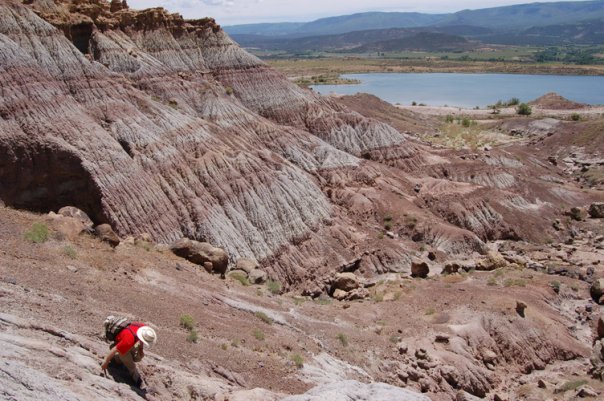
Piceance Creek Basin, Colorado
Piceance Creek Basin, Western Colorado
AGES OF ROCKS: Latest Paleocene into Early Eocene
GEOLOGICAL FORMATIONS: Atwell Gulch, Molina, and Shire Members
Within the Paleocene and Eocene strata of the Piceance Creek Basin of Western Colorado the rock layers preserve a remarkable hyperthermal event, called the Paleocene-Eocene Thermal Maximum of PETM event, 56 million years ago, as well as the smaller ETM2 hyperthermal event. I’ve been collecting and studying how the fossil mammalian fauna responded to these past global warming events. Discovering an abrupt turnover of arboreal mammals, which relied on healthy forest habitat, indicating climate inducted deforestation during the PETM event, while the ETM2 event does not appear to preserve a major turnover of species. Why? This research was the subject of my PhD dissertation and I continue to work on the paleontology and geology of the basin.
Publications from this Research
Burger, B.J. 2013. A new species of the archaic primate Zanycteris from the late Paleocene of western Colorado and the phylogenetic position of the family Picrodontidae. PeerJ 1:e191;DOI 10.7717/peerj.19 [LINK]
Burger, B.J. 2012. Northward range extension of a diminutive-sized mammal (Ectocion parvus) and the implication of body size change during the Paleocene-Eocene Thermal Maximum. Palaeogeography, Palaeoclimatology, Palaeoecology 363-364:144-150. [LINK]
Burger, B.J. 2009. Mammalian faunal change across the Paleocene-Eocene boundary in the Piceance Creek Basin, western Colorado. Unpublished PhD dissertation, University of Colorado, Boulder. pp. 834. [LINK]
Burger, B.J. and Honey, J. 2008. Plesiadapidae (Mammalia, Primates) from the Late Paleocene Fort Union Formation of the Piceance Creek Basin, Colorado. Journal of Vertebrate Paleontology 28(3):816-825. [LINK]
Burger, B.J. 2007. A new late Paleocene vertebrate fauna from the Ohio Creek Formation of western Colorado. The Mountain Geologist, vol 44, No. 3 pp. 41-51. [LINK]
Walker Hollow, Eastern Utah
AGES OF ROCKS: Middle to Late Eocene
GEOLOGICAL FORMATION: Duchesne River Formation
In the Eocene Duchesne River Formation in northeastern Utah, I am working toward locating another significant global warming event that occurred 40 million years ago, called the Middle Eocene Climate Optimum (MECO). I’ve been utilizing carbon isotopes left in the rocks to use as a proxy and hope to correlate the formation to ocean sediment cores. Fossil mammal teeth are rare in the formation, but continued sampling has produced some results of this critical time in Earth’s History. In the last several years I’ve discovered new localities of fossil mammals, that are helping to fill in a gap in our knowledge of the evolution of mammals in North America.
Publications from this Research:
Burger, B.J., 2015. Carbon Isotope Stratigraphy of the Late Middle Eocene Duchesne River Formation in the Uinta Basin of Northeastern Utah, in Vanden Berg, M.D., Ressetar, R., and Birgenheier, L.P., (eds.) Geology of Utah’s Uinta Basin and Uinta Mountains: Utah Geological Association Publication 44, p. 109–118. [LINK]
Burger, B.J. 2015. The systematic position of the Middle Eocene Leptotragulus from Utah and the timing of the origin of Ruminant Artiodactyls in North America. Tate Geologic Museum, Casper College
Burger, B.J. and Tackett, L. 2014. The Stratigraphic Importance of the Brontothere (cf. Diplacodon elatus) in the Brennan Basin Member of the Duchesne River Formation of Utah. Fossil Record 17:69-74. DOI: 10.5194/fr-69-2014 [LINK]
Burger, B.J. 2011. Fossil mammals from the late Eocene Brennan Basin Member of the Duchesne River Formation in Utah. Rocky Mountain 63rd Annual and Cordilleran 107th joint meeting, Geological Society of America Abstracts 43:78 [LINK]
Washakie Basin, Southwestern Wyoming
AGES OF ROCKS: Middle Eocene
GEOLOGICAL FORMATION: Washakie Formation
In a remote region of Wyoming, I’ve been collecting fossil mammals from the Eocene Washakie Formation, famous for the remarkable Dinocerata “terrible horned” beasts, such as Eobasileus, and Uintatherium (shown below). The Washakie Formation also preserves a boundary between the Bridgerian and Uintan Land Mammal Ages, representing a remarkable shift in mammals that may indicate a significant drying climatic event, around 46 million years ago in North America.
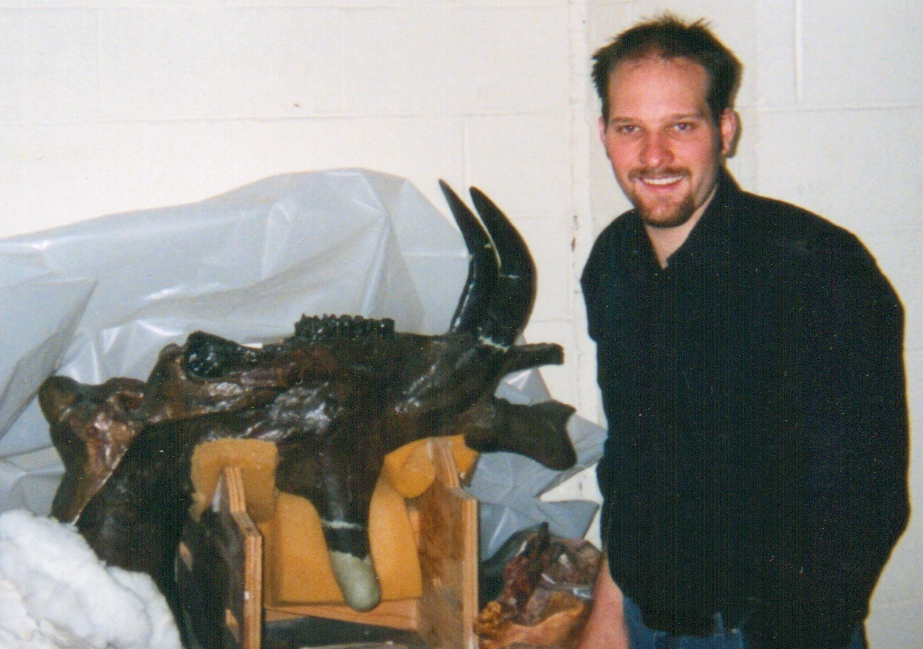
Skull of Uintatherium a typical Dinocerata from the Washakie Basin.
Publications from this Research
Burger, B.J. & Jolley, L. in press:A new large body pig-like mammal (Helohyidae: Artiodactyla) from the Bridgerian Middle Eocene Washakie Formation of southern Wyoming.
Burger, B.J. 2016. Hyrachyus eximius from the Middle Eocene lower Washakie Formation Abode Town Member of Wyoming and its bearing on the origin and early diversification of rhinoceroses. Presented at the Utah Friends of Paleontology annual meeting in Moab, Utah
Burger, B.J. 2015. The systematic position of the saber-toothed and horned giants of the Eocene: the Uintatheres (Order Dinocerata).Presented at the Society of Vertebrate Paleontology meetings Dallas, Texas

